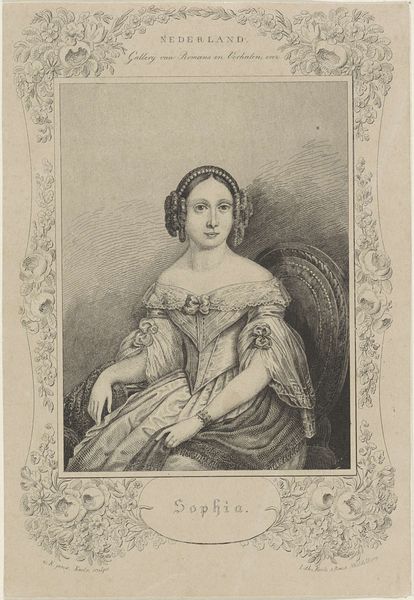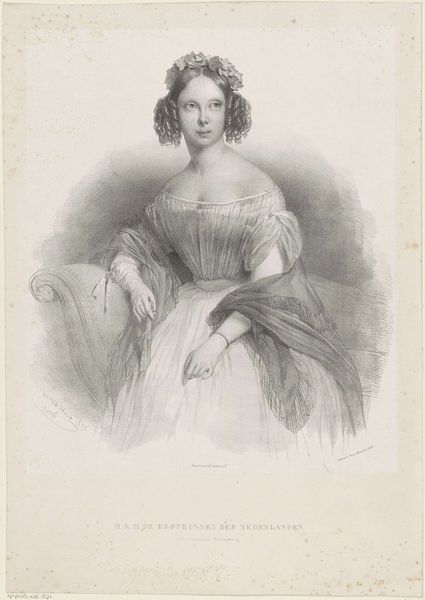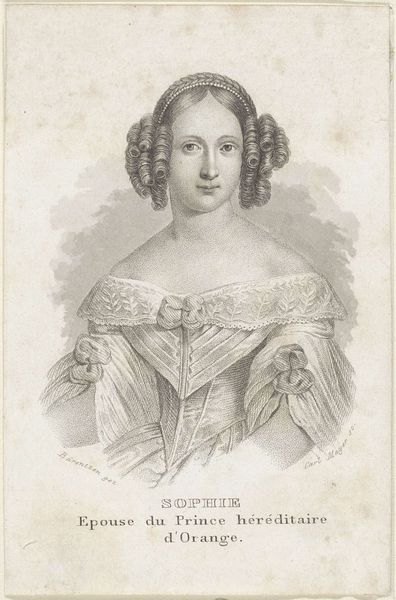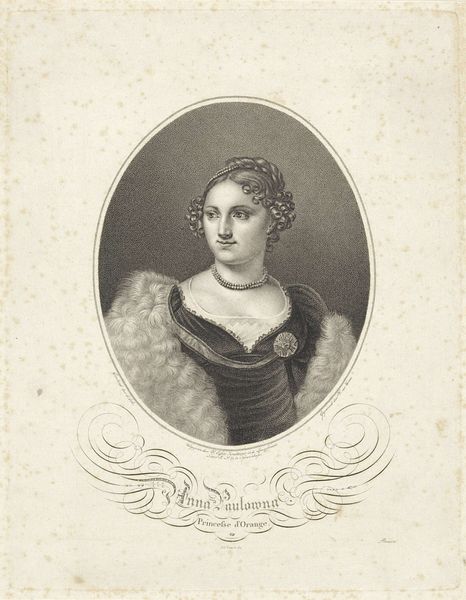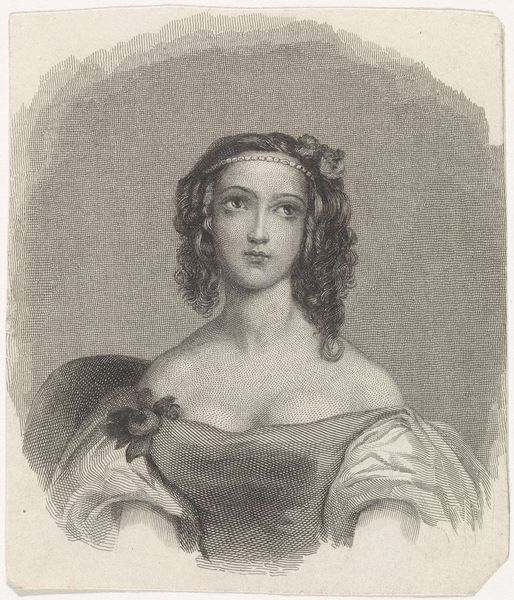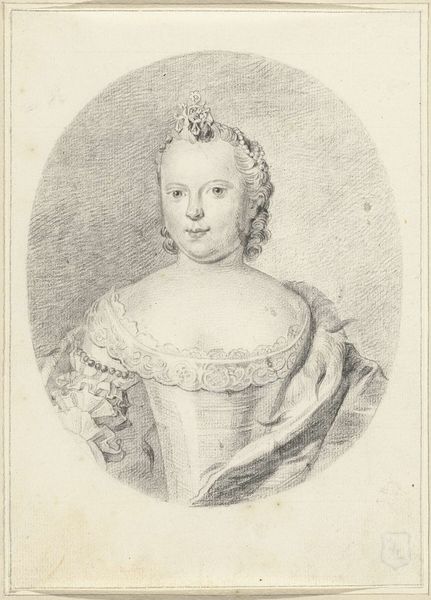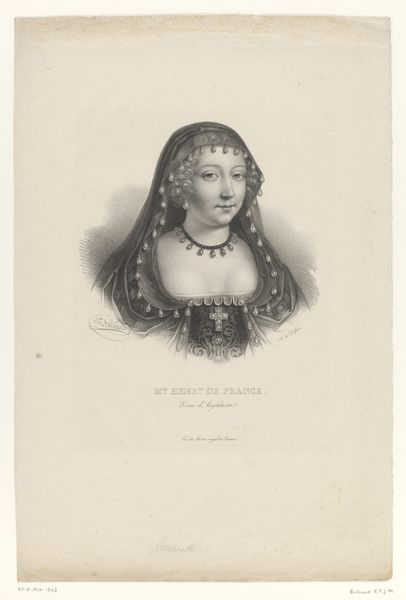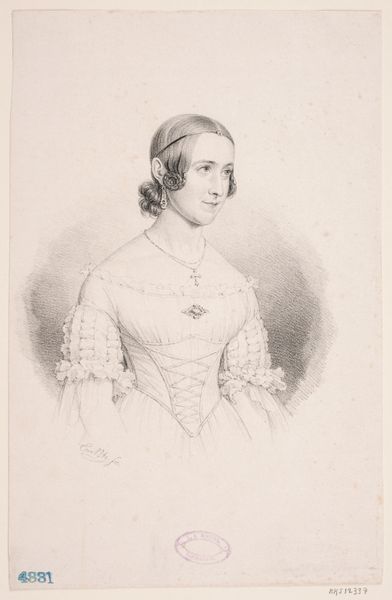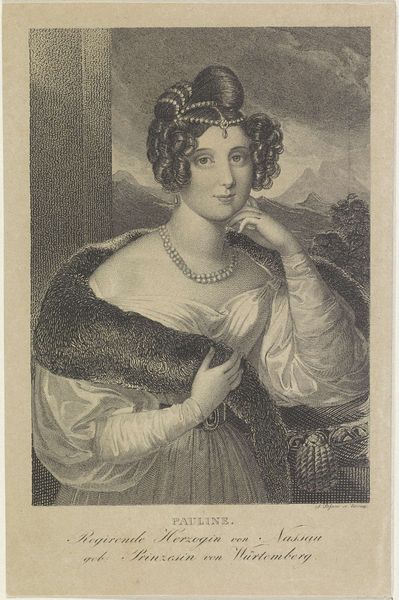
drawing, pencil
#
portrait
#
pencil drawn
#
drawing
#
caricature
#
figuration
#
pencil drawing
#
romanticism
#
pencil
#
portrait drawing
#
realism
Dimensions: height 168 mm, width 126 mm
Copyright: Rijks Museum: Open Domain
Curator: This portrait drawing, made using pencil, captures Sophie van Württemberg, sometime between 1839 and 1845. The artwork currently resides in the Rijksmuseum collection. What's your immediate reaction? Editor: The first thing that strikes me is the gentleness of the image, almost a sense of fragility. The soft gradations of the pencil create a subdued, dreamlike quality, particularly in the treatment of her hair and dress. Curator: I find it intriguing how images of royalty were crafted and consumed in the 19th century. How do such portrayals reinforce power structures or reflect changing societal values regarding women? The very act of immortalizing her through art underscores her social status. Editor: Absolutely. There's a deliberate construction of identity here, but also perhaps an unintentional tension. She's presented as a figure of decorum, yet the medium—pencil drawing rather than, say, a grand oil painting—suggests a degree of informality. Perhaps the artist, who is Anonymous, felt free from the conventions of the more official portrait styles of the time. It is not idealized, right? Curator: This resonates with feminist discourse regarding the representation of women. Was this portrayal designed to showcase feminine virtues deemed appropriate for royalty at the time? Where do we locate her agency in the depiction of herself as a public figure? Did she get a say in how she wanted to be represented, or was it the patriarchal system imposing the aesthetic? Editor: It’s a pencil drawing. Consider the access it provides versus the monumental scale of oil painting. It can speak to more people about the real or presented role of monarchy in a growing democratic system, or even its lack of interest for certain portions of the population. Curator: It allows one to consider whether this portrait served as a piece of political communication, meant to shape public opinion. This could highlight that this work engages broader discussions around the intersections of art, power, and identity, echoing debates from both feminist and cultural studies standpoints. Editor: Well, whatever the context, it presents an image of its era, with all its contradictions. Curator: Indeed. I wonder what stories subsequent generations will weave around this portrayal, considering the portrait is in pencil, accessible, modest, yet is that of an identifiable royalty member, marking a turning point in art history, with discussions extending beyond mere aesthetics and engaging the wider socio-political currents.
Comments
No comments
Be the first to comment and join the conversation on the ultimate creative platform.
